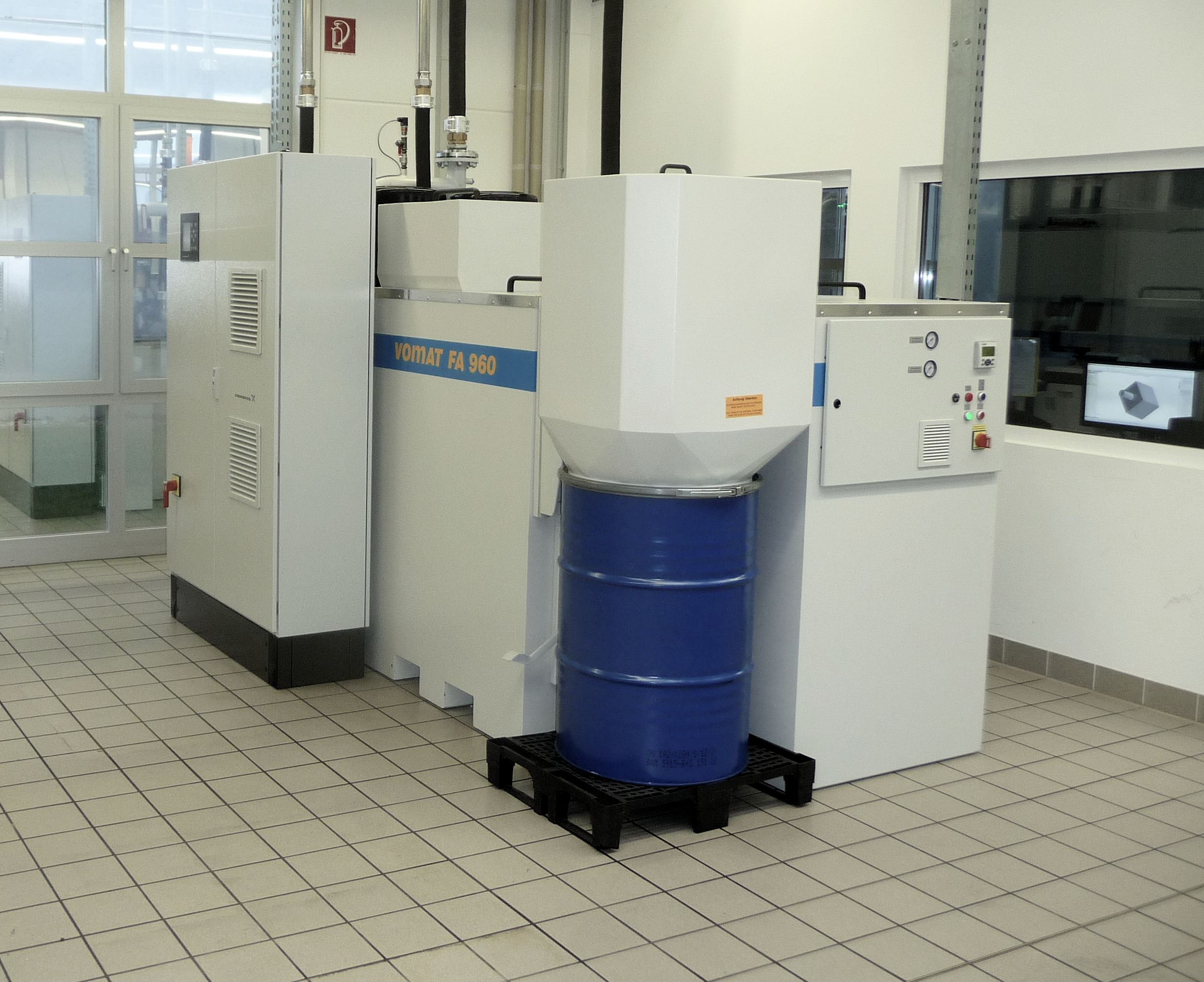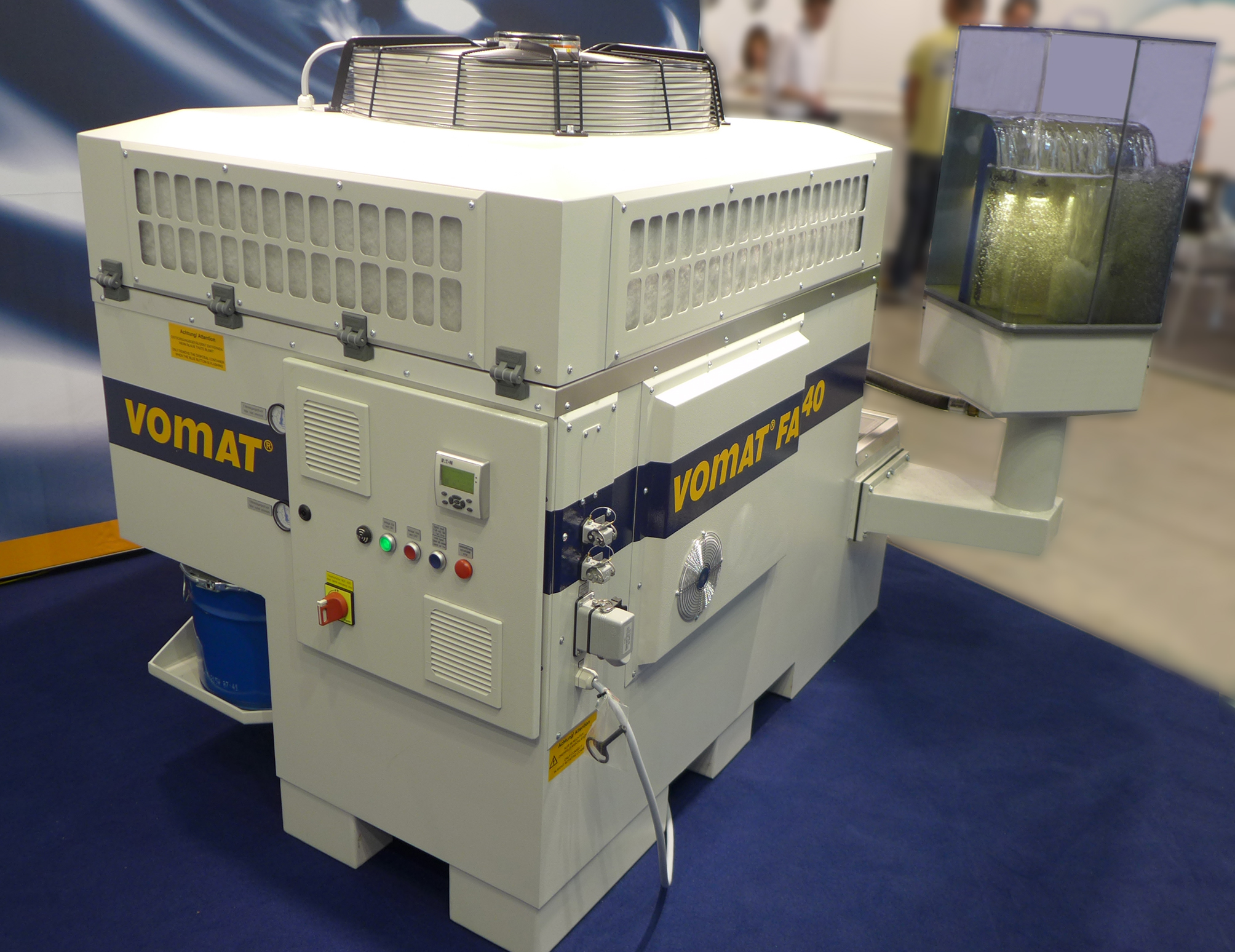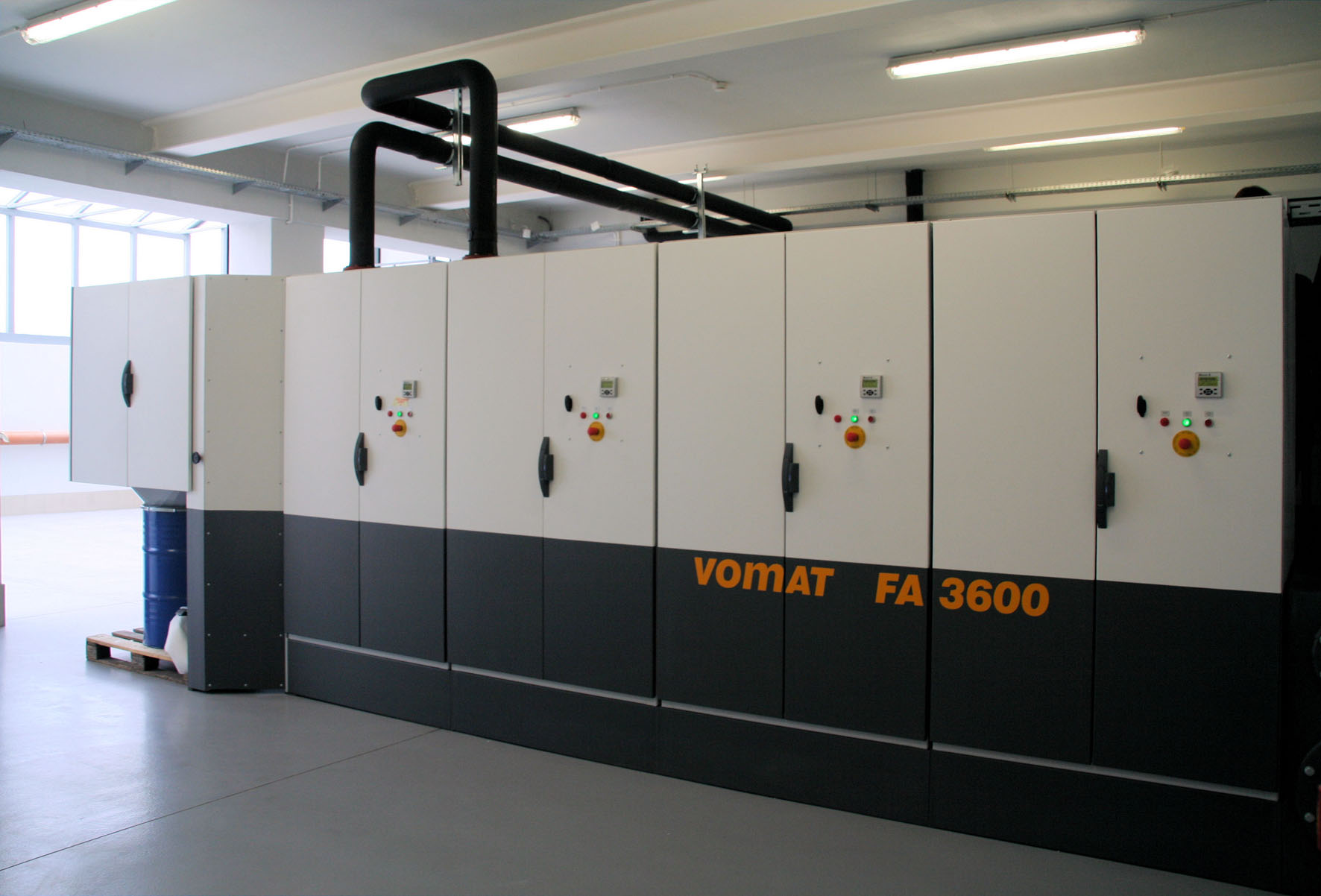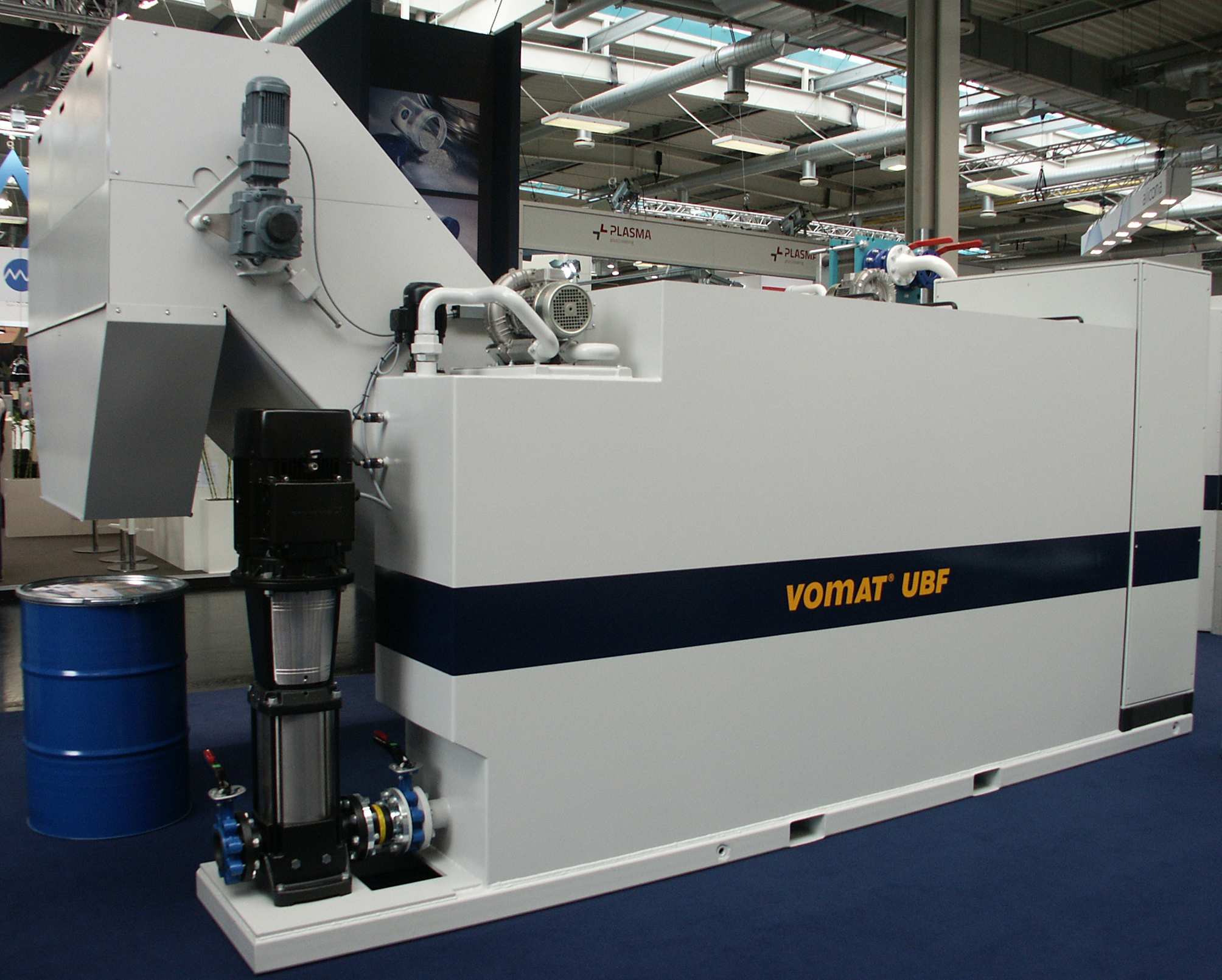 The costs of cooling lubricants in tool grinding often exceed the costs for grinding wheels. Tool manufacturers who acknowledge this can save money with ultra-fine filtration technology that is optimally adapted to a company’s production capacity and manufacturing requirements.
The costs of cooling lubricants in tool grinding often exceed the costs for grinding wheels. Tool manufacturers who acknowledge this can save money with ultra-fine filtration technology that is optimally adapted to a company’s production capacity and manufacturing requirements.
To grind modern cutting tools, all parameters involved in the manufacturing process must be optimally coordinated including the ultra-fine filtration technology. This is the only way to produce drills and end mills in large quantities with consistently high quality and process reliability the end user expects.
Vomat in Treuen, Germany, is a filtration specialist that offers a range of products. "Filtration systems must not only guarantee very high purity of the coolant media over a long period of time, but in terms of capacity and performance they must also be optimally tailored to the respective workflow,” said Steffen Strobel, technical sales manager at VOMAT. “In addition, the filtration system should be highly flexible so it can be easily configured and grow as production expands. From the outset, this offers great potential for reducing current and future production costs.”
The ultra-fine filtration of metal coolants is an important value-added factor in tool grinding. Many studies and recommendations, such as VDI Guideline 3397, Sheet 2, describe successful coolant maintenance as a key factor in reducing production costs. "For the greatest possible success, the finer and cleaner you can filter your coolant, the better the production quality will be,” said Strobel. “Moreover, the coolant can remain in the system for a much longer time and makes the grinding process more economical.”
 According to Strobel, the grinding tools last longer and more drills or milling cutters can be ground with one grinding wheel. Grinding machine downtime is greatly reduced because the grinding wheel no longer has to be frequently adjusted or change. Furthermore, cooling lubricants, which no longer have to be changed as often, not only help to reduce non-productive time, but also cut costs in terms of purchasing, storage, recycling and energy consumption.
According to Strobel, the grinding tools last longer and more drills or milling cutters can be ground with one grinding wheel. Grinding machine downtime is greatly reduced because the grinding wheel no longer has to be frequently adjusted or change. Furthermore, cooling lubricants, which no longer have to be changed as often, not only help to reduce non-productive time, but also cut costs in terms of purchasing, storage, recycling and energy consumption.
Vomat’s product line includes stand-alone units up to large-scale industrial central systems. All systems are modular or custom designed to meet specific  needs of any size tool grinding shop. Vomat systems can be adapted to changing requirements in a company, both technically and in terms of capacity.
needs of any size tool grinding shop. Vomat systems can be adapted to changing requirements in a company, both technically and in terms of capacity.
Advanced Filtration Technology
VOMAT’s FA series stand-alone units feature filtration capacities from 70 to 960 liters/minute and customized central systems. High-performance pre-coat filters with long maintenance intervals are used. The separation of dirty and clean oil is 100 percent. The special filter technology ensures that clean oil in the quality class NAS 7 (3 to 5 µm) is available during the on-demand filtering and backwashing process. The cooling capacity on VOMAT systems range from 9 to 100 kW with a control accuracy of ± 0.2 K.
If needed, standard filtration systems can be adapted to increased or changed production requirements by means of various additional modules, such as frequency-controlled machine supply pumps, internal or external pre-filters as well as special cooling systems. Individual system configurations up to large industrial central systems with optimal cooling and disposal concepts can be realized.
 In addition to the FA ultra-fine filtration systems, VOMAT provides the vacuum belt filter UBF. Strobel said that the UBF offers powerful filtration of water-based coolants, emulsions, and grinding oils. It can also be used to filter ferrous and non-ferrous alloys, hard metals, disc abrasion, and binders from modern cooling lubricants such as water-based coolants without a pre-filtration system. The UBF achieves high filtration performance and filter fineness of 10 to 30 µm. The compact UBF unit is easy to maintain and, according to VOMAT, requires about 70 percent less space than conventional systems due to a special belt guiding system, while providing 100 percent performance
In addition to the FA ultra-fine filtration systems, VOMAT provides the vacuum belt filter UBF. Strobel said that the UBF offers powerful filtration of water-based coolants, emulsions, and grinding oils. It can also be used to filter ferrous and non-ferrous alloys, hard metals, disc abrasion, and binders from modern cooling lubricants such as water-based coolants without a pre-filtration system. The UBF achieves high filtration performance and filter fineness of 10 to 30 µm. The compact UBF unit is easy to maintain and, according to VOMAT, requires about 70 percent less space than conventional systems due to a special belt guiding system, while providing 100 percent performance
"With VOMAT technology, costs can be filtered out of metal coolants,” said Strobel. “Our filters manage the balancing act between productivity, quality and resource-saving tool grinding."
Vomat offers ultra-fine filtration systems. In the U.S., the technology can be viewed at Oelheld U.S. Inc. in West Dundee, Illinois. For information, phone 847-531-8501 or visit Vomat at www.vomat.de.
Contact Details
Related Glossary Terms
- alloys
alloys
Substances having metallic properties and being composed of two or more chemical elements of which at least one is a metal.
- coolant
coolant
Fluid that reduces temperature buildup at the tool/workpiece interface during machining. Normally takes the form of a liquid such as soluble or chemical mixtures (semisynthetic, synthetic) but can be pressurized air or other gas. Because of water’s ability to absorb great quantities of heat, it is widely used as a coolant and vehicle for various cutting compounds, with the water-to-compound ratio varying with the machining task. See cutting fluid; semisynthetic cutting fluid; soluble-oil cutting fluid; synthetic cutting fluid.
- gang cutting ( milling)
gang cutting ( milling)
Machining with several cutters mounted on a single arbor, generally for simultaneous cutting.
- grinding
grinding
Machining operation in which material is removed from the workpiece by a powered abrasive wheel, stone, belt, paste, sheet, compound, slurry, etc. Takes various forms: surface grinding (creates flat and/or squared surfaces); cylindrical grinding (for external cylindrical and tapered shapes, fillets, undercuts, etc.); centerless grinding; chamfering; thread and form grinding; tool and cutter grinding; offhand grinding; lapping and polishing (grinding with extremely fine grits to create ultrasmooth surfaces); honing; and disc grinding.
- grinding machine
grinding machine
Powers a grinding wheel or other abrasive tool for the purpose of removing metal and finishing workpieces to close tolerances. Provides smooth, square, parallel and accurate workpiece surfaces. When ultrasmooth surfaces and finishes on the order of microns are required, lapping and honing machines (precision grinders that run abrasives with extremely fine, uniform grits) are used. In its “finishing” role, the grinder is perhaps the most widely used machine tool. Various styles are available: bench and pedestal grinders for sharpening lathe bits and drills; surface grinders for producing square, parallel, smooth and accurate parts; cylindrical and centerless grinders; center-hole grinders; form grinders; facemill and endmill grinders; gear-cutting grinders; jig grinders; abrasive belt (backstand, swing-frame, belt-roll) grinders; tool and cutter grinders for sharpening and resharpening cutting tools; carbide grinders; hand-held die grinders; and abrasive cutoff saws.
- grinding wheel
grinding wheel
Wheel formed from abrasive material mixed in a suitable matrix. Takes a variety of shapes but falls into two basic categories: one that cuts on its periphery, as in reciprocating grinding, and one that cuts on its side or face, as in tool and cutter grinding.
- milling
milling
Machining operation in which metal or other material is removed by applying power to a rotating cutter. In vertical milling, the cutting tool is mounted vertically on the spindle. In horizontal milling, the cutting tool is mounted horizontally, either directly on the spindle or on an arbor. Horizontal milling is further broken down into conventional milling, where the cutter rotates opposite the direction of feed, or “up” into the workpiece; and climb milling, where the cutter rotates in the direction of feed, or “down” into the workpiece. Milling operations include plane or surface milling, endmilling, facemilling, angle milling, form milling and profiling.

